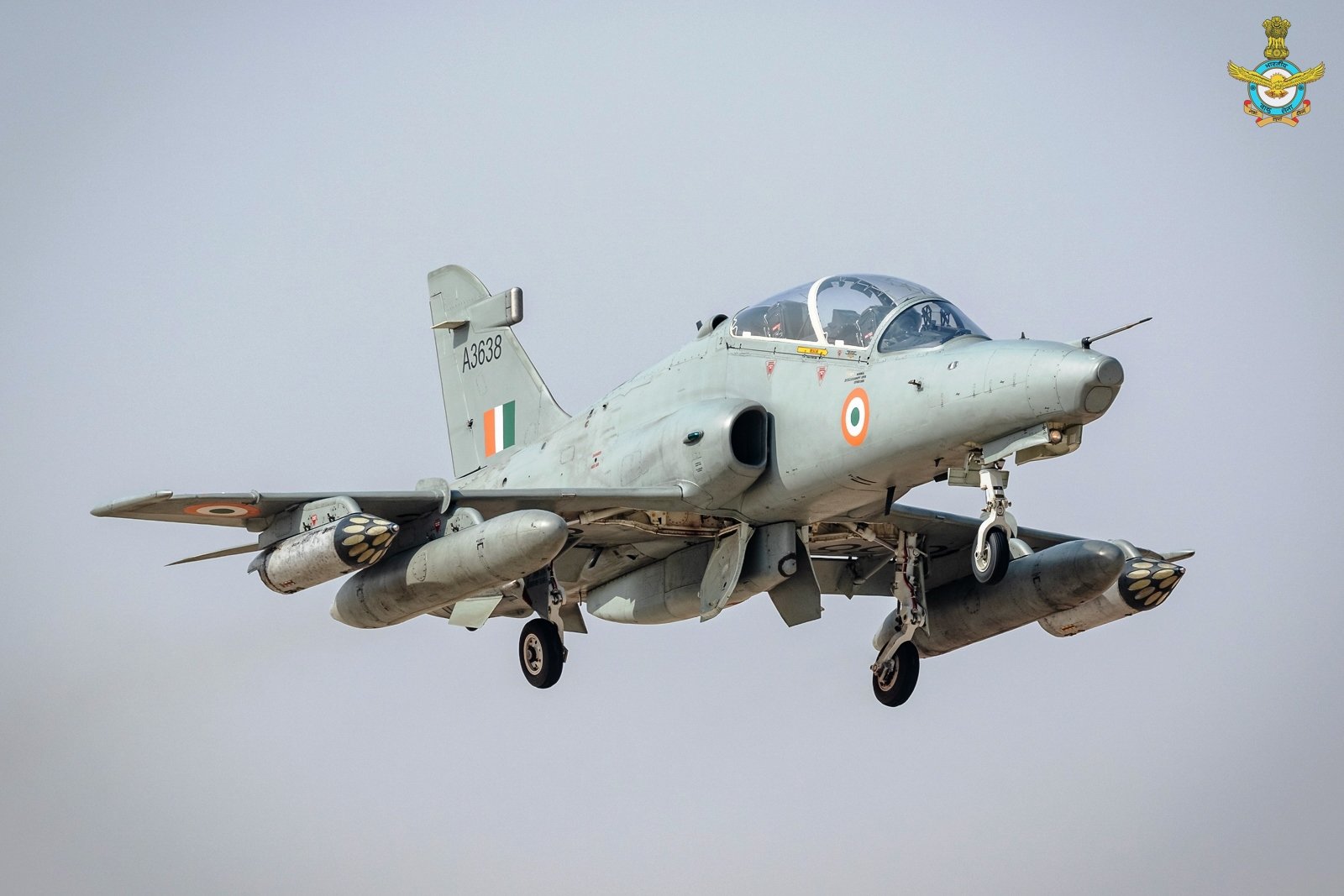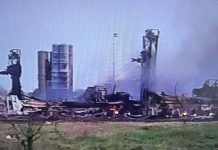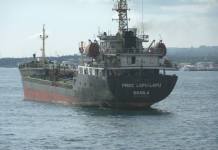India’s advanced jet trainer ‘Hawk’ is in the eye of the storm as suspected corruption in the aircraft’s procurement has led to India’s highest investigating body registering a case.
The ‘STORM’ Is Brewing! Moscow ‘Smoke Screens’ Strategic Kerch Bridge Connecting Russia To Crimea; UK Unimpressed
While the case has been filed only now, the allegations were floated several years ago. An investigation carried out by British media BBC and The Guardian revealed that several global defense industries paid hundreds of millions of dollars to businesses connected to infamous Indian arms dealer Sudhir Choudhrie.
It was reported in 2016 that the Central Bureau of Investigation (CBI) was probing Choudhrie for his alleged involvement in numerous defense deals. Moreover, multiple people within Rolls-Royce informed the Guardian and the BBC that the Choudhrie family and their businesses had collaborated with Rolls-Royce during the high-value Hawk aircraft contract.
The CBI has finally filed a case for alleged corruption in purchasing the Hawk aircraft against British firm Rolls-Royce, its director Tim Johns, Sudhir and Bhanu Choudhrie, British Aerospace Systems, and unidentified defense ministry officials.
The CBI said that the case is connected to allegations of kickbacks received by government officials in procuring the aircraft. According to the CBI, unnamed public employees are accused of abusing their positions to facilitate the purchase of 24 Hawk 115 Advance Jet Trainer (AJT) aircraft from Rolls-Royce and its affiliated businesses.
The case has been filed at a time when Rolls-Royce has offered its combat engine for India’s fifth-generation aircraft AMCA.
Last month, media reports indicated that the UK government had granted Rolls-Royce an export permit to transfer combat engine technology to India, aiming to develop combat engines using a special co-creation model.
How Did India Sign A Deal For Hawk Trainers Against The Odds?
Manufactured by British BAE Systems, Hawk is an advanced training aircraft with a single jet engine. The Hawk made its flying debut in 1974 at Dunsfold, Surrey, UK, and is currently operational in 12 countries worldwide.
Besides being a trainer, the aircraft is also used for aerobatics and ground-attack operations.
Although the Indian Air Force (IAF) was rallying for the purchase of Hawk trainers for some 20-odd years, it was in September 2003 that the much-heralded decision to buy Advanced Jet Trainers (AJTs) for the Indian Air Force (IAF) became a reality.
The decision to buy 66 Hawk AJTs built by the British manufacturer was reached on September 3 by the Cabinet Committee on Security (CCS), chaired by then Prime Minister Atal Bihari Vajpayee.
Although Russian and Czech companies also competed for the lucrative Indian contract, the British Aerospace Systems (BAE)-built aircraft had been the front-runners for a considerable time.
At the time, it was believed that a spate of crashes had led to the acceleration of the decision to buy the Hawk trainer from BAE Systems.
“The decision fulfills one of the long-standing needs of the IAF. The induction of the AJTs will increase the skill levels of our trainee pilots graduating from low-speed trainers to advanced high-performance frontline fighter aircraft,” the then Defense Secretary Ajay Prasad said after the government announced the details of the deal.
Before the decision to purchase was taken in 2003, several governments before the BJP were blocked from negotiating an AJT agreement for several reasons, most notably the cost.
Additionally, the government was eager to diversify its acquisitions and wanted to use defense purchases for political leverage in countries like the US, the UK, and France.
The IAF ultimately chose the Hawk because of its successful track record. Most other aircraft on the market were either in the planning stages or had not yet proven themselves.
As per the deal signed, 24 aircraft were to be procured directly, and 42 were to be manufactured under license in India.

It was said that if British Aerospace had successfully received export permits from American manufacturers for several of the Hawk’s components, the sale would have happened sooner. The sanctions imposed by the US and UK against India due to the Pokhran nuclear tests were the cause of the delay.
After the agreement was finalized, it almost fell through when state-owned Hindustan Aeronautics, which would produce 42 Hawks under license, demanded additional funding for tooling and training.
However, the deal to the tune of £900m to supply New Delhi with 66 Hawk fighter trainers was signed months later in March 2004.
Following one of several disagreements with Washington over its nuclear weapons program, India insisted on removing all US-made components from the jets, and the British government had to pledge to provide spare parts for the aircraft for over 25 years.
Several years after this, India signed a contract for 57 more BAE Hawk Advanced Jet Trainers (AJTs) in 2010, all manufactured under license at the Hindustan Aeronautics Ltd. (HAL) factory in Bangalore. However, India’s quest for procuring Hawk trainer aircraft did not stop there.
India wanted to acquire 20 additional Hawk trainers, with the purchase stuck due to the shortfall of funds. In 2018, British vendor BAE Systems and the UK government finally offered India a line of credit to land a contract for the aircraft.
At the time, the Indian Air Force went so far as to say that it was also not interested in upgrading its fleet of over 120 Hawk planes that were inducted into service after a deal with Britain in 2004.
India Boasts A Large Hawk Fleet
The variant India uses is the Hawk Mk 132, a tandem-seat aircraft. As a result, there are two adjacent chairs. So the pilot and student can both fly the aircraft together.
The IAF used the Hawk to close a capability gap between its more sophisticated fighter aircraft and its more basic piston-engine trainers. Before training on supersonic planes like Jaguars, MiG-21s, and Mirage 2000s, IAF cadets use the Hawk throughout Stage III of their training.
The Hawk Mk 132’s twin-spool turbofan engine is a Rolls-Royce Ardour Mk 871. Its range is 2,520 kilometers, and its top speed is 1,065 kilometers per hour; 2,805 liters of fuel can be carried on board the aircraft.
A significant Hawk assembly line has been constructed by HAL and BAE Systems together. Now, India owns the largest Hawk fleet outside of the United Kingdom. The IAF’s fleet now had about 123 Hawk advanced jet trainers at the end of 2019. The Bidar Air Force Station, one of the IAF’s top centers for flying instruction, is home to India’s Hawks.
Besides the Indian Air Force, the Indian Navy and the Suryakiran display team also operate the aircraft. India has sought to upgrade the capability of its Hawk AJT aircraft over the years.
In 2021, an image tweeted by the IAF’s veteran pilot Grp. Capt. Harsh Vardhan Thakur (VSM) showed a Hawk-i aircraft with wingtip mounted AIM-132 Advanced Short-Range Air to Air Missile (ASRAAM), turning the jet into a missile-carrying aircraft. The caption read, “Missile integrators. Hawk-i with ASRAAM.”
Missile integrators. Hawk-i with ASRAAM. pic.twitter.com/WmapnL4YDK
— Harsh Vardhan Thakur (@hvtiaf) April 22, 2021
He claimed that although the photo was shot during the Aero India event, work is still being done to integrate the missile with the aircraft. These training aircraft essentially caught the attention of the Indian Air Force, which planned to equip them with air-to-ground bombs for combat support tasks.
At the time, it was noted that it might be a productive and affordable platform for the Indians to conduct combat operations while also training pilots. Experts stated that including ASRAAM missiles would provide the Hawk fleet with the ability for aerial combat while these air-to-ground armaments are being evaluated and integrated.
- Contact the author at sakshi.tiwari9555 (at) gmail.com
- Follow EurAsian Times on Google News





